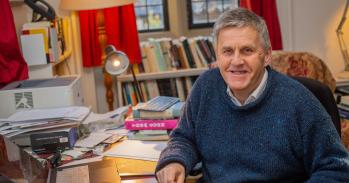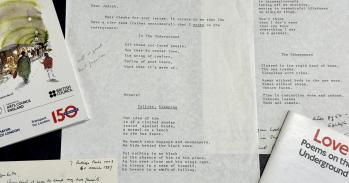
An evening at Lucy Cavendish College next Monday will bring together speakers and musicians from Cambridge and beyond to look at the ways in which the literature, art and music of Iran have flourished through revolution and repression. The event is free and open to all.
An evening at Lucy Cavendish College next Monday will bring together speakers and musicians from Cambridge and beyond to look at the ways in which the literature, art and music of Iran have flourished through revolution and repression. The event is free and open to all.
Rap is big in the underground music scene as a genre that expresses the hopes and fears of the younger generation.
Florence Hazrat
To adapt a phrase from Jane Austen, it is a truth universally acknowledged that love, both fortunate and tragic, connects all cultures through all ages. Be it Austen’s Elizabeth and Darcy, Shakespeare’s Romeo and Juliet, or Khosrow and Shirin, the best-known lovers in Persian poetry, pride and passion never fail to fascinate writers and readers alike.
The tale of King Khosrow and Princess Shirin, young nobles from two different kingdoms, has been told and re-told by Persian poets from the 10th century onwards. Most famously, it features in the Shahnameh (Book of Kings) an epic poem composed by Ferdowsi, considered Iran’s national poet and a writer whose narratives draw out the twists and turns that love and kingship take.
Medieval manuscripts of the story of Khosrow and Shirin come embellished with illustrations of iconic moments. A favourite scene portrays Shirin bathing in a lake while, hidden behind some trees, Khosrow admires her beauty. He is smitten; but the course of true love never runs smooth. The sweethearts have to overcome the hatred of fathers, friends and political allies before they are finally united - not in life but, like Romeo and Juliet, in death.
On Monday 30 April, Dr Christine van Ruymbeke, a Cambridge expert on classical Persian poetry, will explore the shifting characterisation of Shirin at Lifting the Veil, an evening at Lucy Cavendish College that is free and open to everyone.
She will explain how Princess Shirin captured the imagination of both Ferdowsi (940–1020 AD) and Nizami Ganjavi (1141-1209 AD), and why different versions down the ages present Shirin as wayward or faithful, politically ambitious or romantically tender.
The event has been organised by Florence Hazrat, a graduate student of English Literature at Lucy Cavendish who is keen to encourage a greater understanding and enjoyment of Iranian culture. She said: “The evening will be an opportunity to look behind the headlines at the real faces and facets of Iran today - and focus on the way in which the country’s vibrant culture has flourished through times of turmoil. There will be talks on Iranian poetry, music and classical architecture, as well as live performances of traditional and modern music.”
Cambridge scholar and forensic archaeologist Christos Tsirogiannis will investigate ancient Persia as the scene of a crime and speak about his work in tracing thefts from archaeological sites in Iran. Roya Arab, an archaeologist at the School of Oriental and African Studies in London, will talk about the impact of war on heritage. She will also play the piano and sing in Persian with the Iranian-born rappers Hichkas and Reveal.
“When people think about Iran, rap isn’t usually top of their list – hip hop and hijab just don’t seem to go together. Rap seems too Western, too American. And it’s true that rap is officially banned in Iran but it’s big in the underground music scene as a genre that expresses the hopes and fears of the younger generation. Young Iranians don’t want to be seen by the world as enemies, they just want to live a normal life,” said Hazrat.
The rapper Hichkas, which means nobody in Persian, had to flee Iran for Britain because his politically-charged music angered the current regime. Although his focus is on contemporary politics, his lyrics are also inspired by the classical Persian poets. Hazrat explained: “Hichkas’s music blends traditional sounds and instruments with modern rhythms that can rival any Eminem. It is a symbol for the curious place of Iranian youths today who are pulled between a glorious past and an uncertain future.”
Often portrayed as opposing cultures, with conflicting values, the West and Iran have much in common. Van Ruymbeke is currently studying medieval fables which have been translated from Indian to Persian and many other languages. Unlike Aesop’s fables, such as The Hare and the Tortoise, the long-neglected Persian fables don’t really teach lessons about friendship, justice and how to lead a good life: they deal with political realism. Van Ruymbeke is excited to revive a forgotten text.
She said: “The thesis I’m developing is that the contents and aims of this collection of fables have been progressively misunderstood and corrupted over the centuries. I’m looking afresh at the text in order to get to the bottom of the stories."
Lifting the Veil takes place at Lucy Cavendish College, Cambridge, on Monday, 30 April from 5.00pm. All parts of the evening are open to the public and free of charge with the exception of a small charge for a Persian-themed meal. There is no need to book in advance.
This work is licensed under a Creative Commons Licence. If you use this content on your site please link back to this page.





